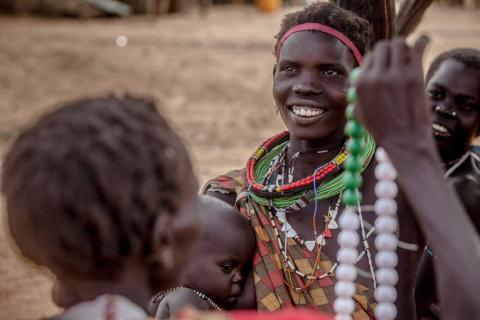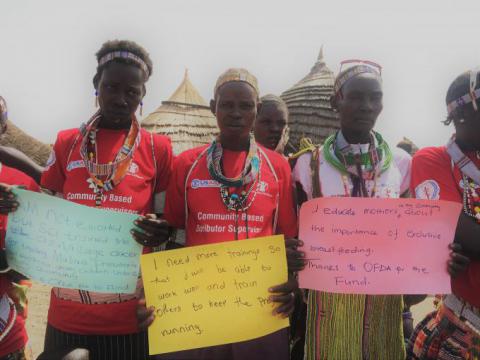Not Educated, but Can Treat Childhood Illnesses
Save the Children trains hundreds of women who cannot read and write to treat childhood illnesses and malnutrition

Eastern Equatoria State, with a population of 965,231 has 52 percent crisis emergency and humanitarian catastrophe with Critical levels of Global Acute Malnutrition (GAM 15.0%-29.9%) according to the IPC report in January-July 2018. Increases in Acute malnutrition is attributed to severe food insecurity, widespread insecurity, displacement, poor access to services, high morbidity, extremely poor diets and poor sanitation and hygiene.
In an effort to treat rising childhood illness and malnutrition, Save the Children has trained 450 Community Based Distributers (CBDs) in greater Kapoeta 200 from Kapoeta East, 150 from Kapoeta South and 100 from Budi to identify and treat malnutrition and earlier childhood illnesses. The CBDs have so far treated about 85 thousand beneficiaries in which 7295 for Malaria, 5177 for Pneumonia and 5286 Diarrhea cases. They have screened 28439 children under five for malnutrition and carried out Health education to 39666 beneficiaries in the area. Thirty-one CBD supervisors were trained to monitor the work of the women.
The USAID/OFDA supported ICCM is contributing to the reduction in morbidity and mortality from common communicable diseases and acute malnutrition in the area.
The CBDs were selected in a community meeting organized by SCI staff and chiefs in the area. Trained in a local language SC trainers were using simplified pictorial manual which makes it easy for them to understand the signs of Malaria, Pneumonia diarrhea and the cut offs for malnutrition. Their Monitoring and Evaluation tools are design in pictorial form, which makes it easy for them to understand during the training and at the time of usage.
Their tasks are treatment of malaria, pneumonia and diarrhea among children under five, follow up of children undergoing treatment for further advise to the parents, malnutrition screening for children under five, referral of children with danger signs to health facility, health education to mothers and care givers on personal hygiene, Proper keeping of the drugs and their job aids.
How do they treat children under five?
The CBDs are provided with job aids that is easy to use for instance the respiratory timer and beats for respiratory counts, MUAC tap for malnutrition screening and were told that green indicates that a child is healthy, yellow that they are beginning to become malnourished, and red indicates severe malnourishment.
“I am not educated but Save the Children trained me as a village doctor to treat Malaria, Pneumonia, and Diarrhea among children under five in my community. Thanks to OFDA for the fund”, Nahim* 38, has said. Another CBD, 40-year-old Aida* said, “she now educates mothers in her community about the importance of exclusive breast feeding”
The conflict has deteriorated the health infrastructure across the country as many facilities were destroyed and/or looted during the ongoing conflict. Access to basic healthcare remains a critical need with only 22% of health facilities fully functioning in 2017. Save the Children is recognized as a strong health actor in South Sudan. The Charity supports 58 primary health care facilities and a hospital across the country. Through community-based interventions such as our integrated Community Case Management (iCCM) programme, Save the Children provide health services for community treatment for malaria, pneumonia and diarrhea in Easter Equatoria. We thank the USAID/OFDA for the support.
....Written by Tito Justin
 South Sudan
South Sudan 